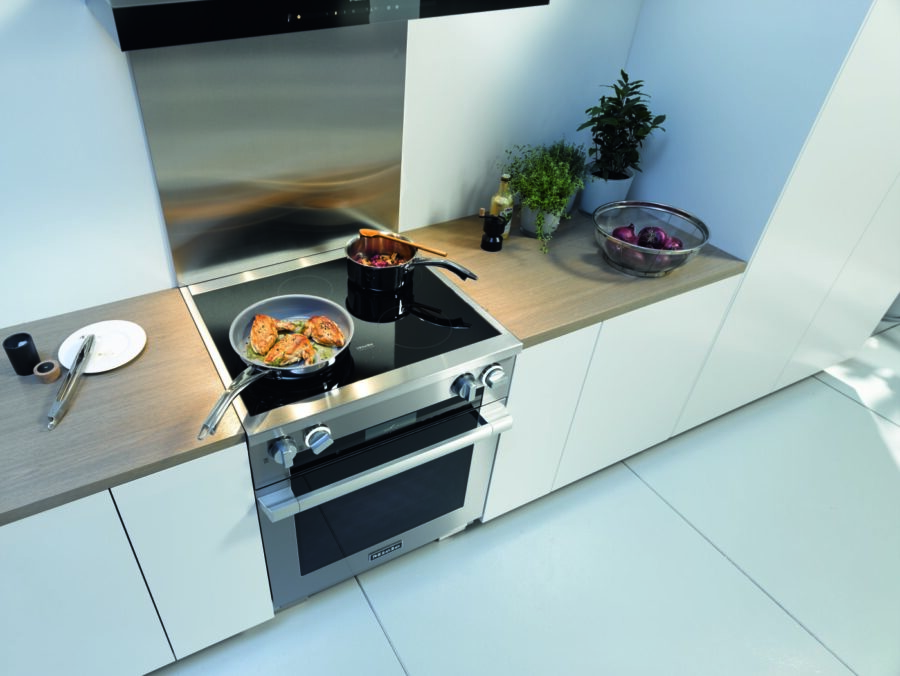Imagine waking up on a crisp autumn morning to hear the constant drip-drip-drip from your ceiling. You scramble to grab a towel to catch the water, but it’s already spreading across your living room. You’re frustrated, stressed, and concerned about how this could have happened. Who is responsible? A leaking roof. But what if there was a way to prevent these headaches before they even start? Waterproofing solutions are a reliable and effective approach to protect your roof and extend its life. In this blog post, we’re going to discuss the various types of waterproofing techniques available, how they work, and the benefits they provide.
Why Do We Need Waterproofing On the Roof?
Waterproofing your roof is one of the most important steps in maintaining its durability. Water, whether from rain, snow, or humidity, can gradually damage the structure, which causes damage over time. Here are five primary reasons why waterproofing is important for roofs.
Prevents Water Damage
Water is one of the most damaging elements for any structure. It seeps into small gaps and cracks in the roof, slowly deteriorating the material. Over time, this can result in serious structural difficulties. Proper waterproofing makes the roof resistant to water, keeping it dry and safe from leaks.
Reduces Risk of Mold and Mildew
When water gets trapped in the roof, it creates a perfect breeding ground for mold and mildew. These organisms not only damage the structure but can also pose serious health risks. Waterproofing acts as a shield, stopping water from infiltrating the roof and preventing the growth of mold and mildew.
Increases Roof Lifespan
Waterproofing solutions can help to extend the life of your roof by protecting it from weather, corrosion, and other natural elements. With reduced chances of water infiltration, the roofing material remains intact for longer, reducing the need for regular repairs or replacements.
Enhances Energy Efficiency
Waterproofing also improves energy efficiency because it restricts heat loss and gains through the roof. A well-insulated roof keeps inside rooms cooler in summer and warmer in winter, which leads to decreased energy costs.
Adds Value to Your Property
A well-maintained roof, including waterproofing, increases the value of your property. Potential buyers are more likely to place in a home that is water resistant. It is a long-term investment that pays off when you sell or rent out the property.
“A roof is only as strong as the waterproofing under it.”
What Are the Benefits of Waterproofing Solutions for Roofs?
Waterproofing provides several advantages beyond protecting your roof from water. Let’s take a look at some of the main benefits.
- Prevents Water Damage: Waterproofing solutions block water from seeping into the roof structure, reducing the risk of leaks and damage.
- Increases Roof Longevity: These solutions protect the roofing materials from deterioration, extending the overall lifespan of the roof.
- Enhances Energy Efficiency: A waterproofed roof helps regulate indoor temperatures, reducing energy costs associated with heating and cooling.
- Improves Indoor Air Quality: Waterproofing prevents moisture buildup, which reduces mold growth and enhances air quality inside the building.
- Boosts Property Value: A well-maintained, waterproofed roof adds value to the property, which makes it more appealing to potential buyers.
What Are the Steps for Application Waterproofing Solutions?
Applying waterproofing solutions to a roof involves several critical steps to ensure durability and effectiveness. Proper application helps ensure long-lasting results and prevents water damage. Below are the essential steps for applying waterproofing solutions:
Step 1 Surface Preparation
Before any waterproofing can begin, it’s essential to prepare the surface of the roof thoroughly. This involves cleaning the roof to remove dirt, debris, and any loose materials that could interfere with the application. Surface preparation is vital for ensuring the waterproofing material adheres properly and effectively covers the entire area.
Step 2 Inspection and Repair
Once the surface is clean, inspect it for cracks, gaps, or any damage that could lead to leaks. These areas must be repaired before applying the waterproofing solution. Using sealants or repairing mortars ensures that no water will penetrate the roof after waterproofing is completed.
Step 3 Primer Application
A primer is often applied to create a strong bond between the roof surface and the waterproofing solution. It also ensures that the waterproofing material spreads evenly across the surface. Primers play a key role in maximizing the effectiveness of the waterproofing process.
Step 4 Waterproofing Membrane or Coating Application
Once the primer has dried, the main waterproofing solution is applied. This can be a liquid coating, a sheet membrane, or a bitumen-based solution, depending on the type of waterproofing chosen. It’s important to apply the solution evenly and cover all areas to prevent water infiltration.
Step 5 Curing and Drying
After the waterproofing solution is applied, it needs time to dry and cure. This can take up to 24 to 48 hours, depending on weather conditions and the type of solution used. Ensuring proper drying is essential to create a durable waterproof layer that will last for years.
What Are the 8 Waterproofing Techniques for Roofs?
Choosing the right waterproofing technique can make a significant difference in roof durability. Here are some common waterproofing techniques used for roofs:
- Liquid waterproofing membranes: A flexible liquid solution that creates a seamless layer of protection over the roof. It’s suitable for both flat and sloped roofs.
- Sheet membranes: These are rolled sheets applied over the roof surface. They provide excellent protection against water and are typically used in commercial buildings.
- Bitumen-based waterproofing: Known for its durability, bitumen-based solutions create a solid waterproof layer, commonly used in industrial buildings.
- Polyurethane waterproofing: This technique involves a liquid membrane that becomes solid and water-resistant when cured. It offers excellent elasticity and durability.
- Cementitious waterproofing: Often used for wet areas, this method involves applying a cement-based waterproofing mixture that bonds well with concrete roofs.
- Silicone-based waterproofing: This is a highly durable and UV-resistant option, often used for flat roofs. It forms a flexible and waterproof coating.
- EPDM rubber waterproofing: A synthetic rubber material used to waterproof roofs. It’s known for its elasticity and resistance to temperature changes.
- Cold-applied liquid waterproofing: A cost-effective method that is applied coldly and forms a seamless waterproof barrier on the roof.
How Do Construction Chemicals Play a Role in Waterproofing?
Construction chemicals play a role in waterproofing systems due to their increase in the strength, flexibility, and adherence of waterproofing materials. These chemicals include polymers, adhesives, and other substances designed to improve the performance of waterproofing membranes and coatings. Construction chemicals suppliers in Pakistan offer various solutions that can be adjusted to individual building needs.
Using high-quality building chemicals ensures that waterproofing solutions last longer and are more effective. These chemicals act to build a strong binding between the roofing material and the waterproofing solution, ensuring that no water goes to the surface.
How to Choose the Right Construction Chemicals for Roof Waterproofing?
When choosing construction chemicals for waterproofing, it’s important to focus on quality and compatibility with the existing roofing material. Construction chemicals suppliers in Pakistan like Hutaib offer a wide range of products, and choosing the proper one can significantly improve the durability and performance of the waterproofing solution. Always check that the chemicals you use are appropriate for your roofing material. This ensures that the waterproofing solution sticks properly and lasts longer, providing better protection against water infiltration. High-quality chemicals ensure that the waterproofing stays flexible and resilient even under extreme weather conditions.
Why Hutaib Industrial Solutions is Your Best Choice for Waterproofing Solutions?
Hutaib Industrial Solutions stands out as one of the best waterproofing solutions. With over twenty years of experience, we have been offering high-quality waterproofing solutions to our clients. As the largest textile chemicals supplier in Pakistan, we offer a wide range of construction chemicals that are ideal for waterproofing applications. Our commitment to quality and customer satisfaction has made us a trusted partner for countless businesses across the country. We collaborate with leading international manufacturers to deliver the best waterproofing products available, which ensures that your building remains durable and water-resistant for years to come.
Let’s Recap
Waterproofing your roof is essential and an ideal decision for the structural integrity of your building. Using the proper materials and processes protects your roof from water damage, increases its durability, and enhances energy efficiency. Whether you own a home or work as a contractor, knowing the benefits of waterproofing and how to do it right can save you time, money, and worry later on. Working with trusted suppliers like Hutaib Industrial Solutions ensures that your building has the best waterproofing solutions.
Be sure to check back for more exciting news on ChemHubGlobal!
Also Read: Why Are Rubber Sheets Preferred for Anti-Slip Flooring in Factories?










